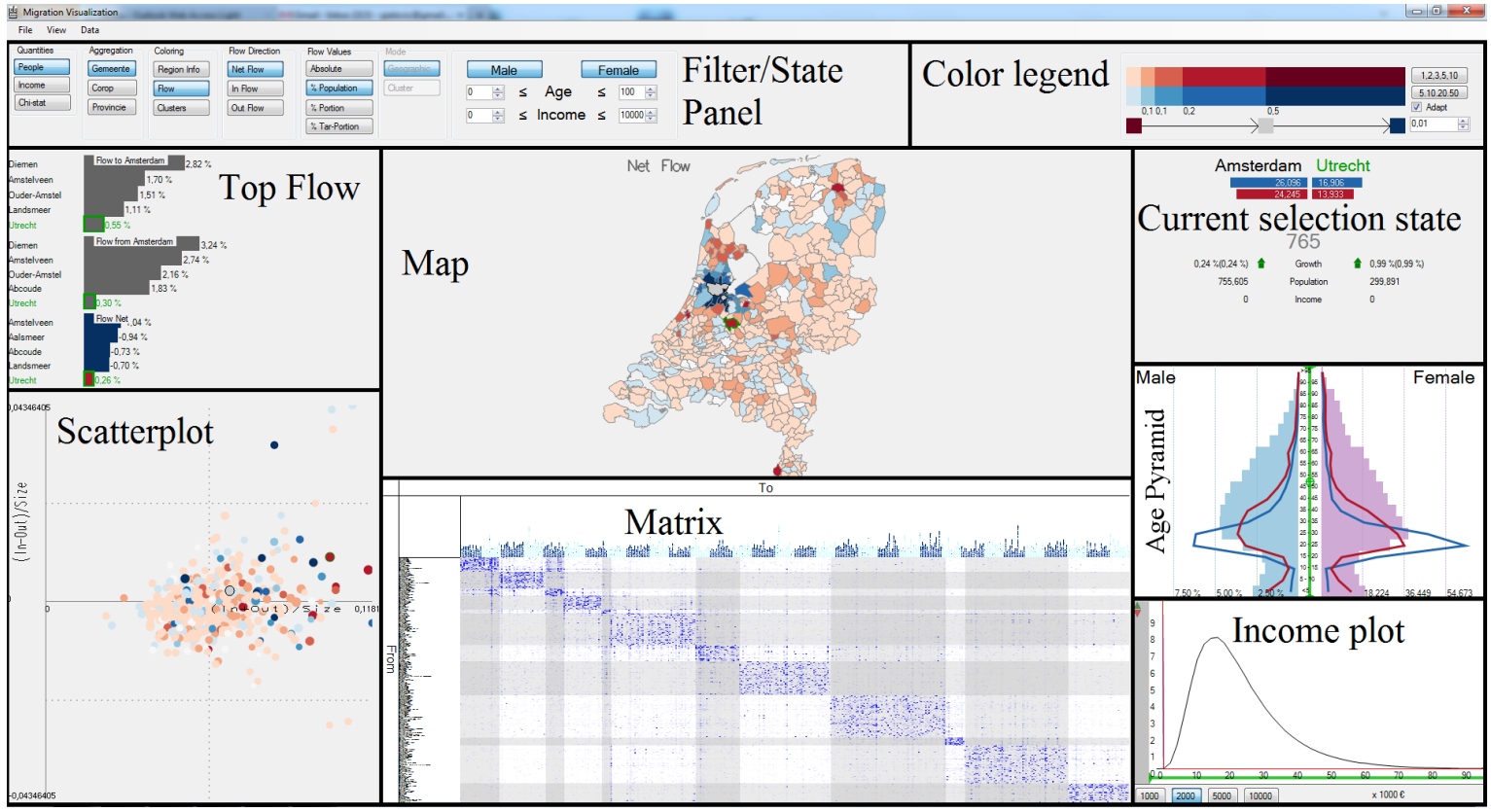Project: Migration visualization
Description

Demographic experts at CBS are interested in migration. Currently, analysis of migration data is a time-consuming process. The migration data set contains both information about the regions between which
people migrate, and the migrants themselves. A combination of existing,
easy to interpret visualizations is used to get insight in the data and speed
up the exploration and analysis of migration data. Aggregation of the regions and filtering of the people are used to cope with the scale of the data.
The user is enabled to interactively explore the data by using a familiar
representation of a country: a map. Different graphs and a scatterplot
show additional information about the inspected regions and the people
moving in or out. A clustering algorithm is employed to seek for patterns
in the data, by grouping similar regions based on attributes like age or
income distribution, or by grouping them based on the migration data. A
matrix visualization is used to analyze or validate the clustering. The implementation is demonstrated using migrations between municipalities in
The Netherlands. Other types of flow data can be supported using minor
adjustments. The targeted audience are experts in migration data analysis
and demographics, to help with the analysis of migration data, but also
any interested novice to the field.
Details
- Student
-
GOGiel Oerlemans
- Supervisor
-
 Jack van Wijk
Jack van Wijk
- External location
- CBS - Rijswijk
- Link
- Thesis